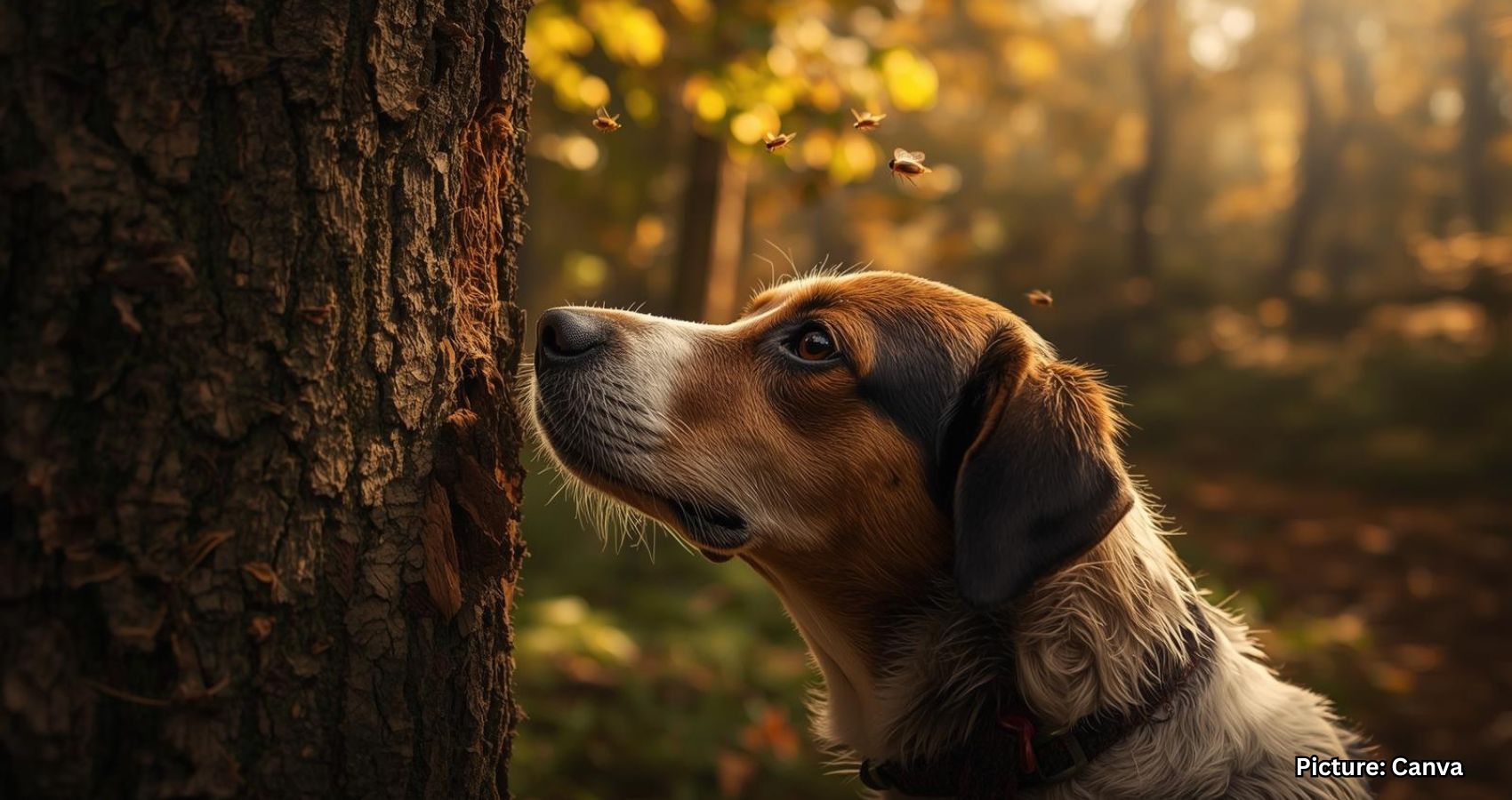Researchers at Virginia Tech have discovered that dogs can effectively detect the invasive spotted lanternfly, aiding in the fight against this destructive pest.
Catching the spotted lanternfly early is crucial, but locating its eggs can be a challenging task. This is where dogs come into play, utilizing their exceptional sense of smell to assist in the effort.
Researchers at Virginia Tech have found that dogs, often referred to as man’s best friend, may also serve as a vital ally in combating the spread of the invasive spotted lanternfly. For the first time, a study has demonstrated that pet dogs can help curb the rapid proliferation of this pest.
The spotted lanternfly feeds on various plants and excretes a sugary substance known as honeydew, which fosters mold growth. Due to their destructive nature, several states have initiated campaigns encouraging residents to stomp on these pests upon sight. However, experts emphasize that the real solution lies in eliminating their egg masses, which can be difficult to locate as they often resemble dried mud and blend seamlessly with their surroundings.
“Dogs have one dominant sense. It’s their nose. We use our eyes. Dogs use their nose like their eyes,” explained Katie Thomas, a participant in the study.
Thomas, along with her nine-year-old pit bull mix, Finch, took part in the study with the hope of applying their years of recreational scent work to a pressing environmental issue. They underwent both indoor and outdoor tests, successfully sniffing out egg masses and receiving rewards when Finch accurately identified them.
“To be able to do things that we already do, that we are having a lot of fun with… Train our dogs to sniff stuff, being able to apply that to something like a real problem that affects our community is really fulfilling,” Thomas remarked.
The spotted lanternfly is native to Asia and was first identified in the United States in Pennsylvania over a decade ago. Since then, it has spread to 19 states, according to the United States Department of Agriculture (USDA).
“They are everywhere, and we need to search out the eggs. The problem is it’s too late once we have the lanternfly,” stated Carolyn Shelburne, another study participant.
Shelburne and her nine-year-old border collie, Hermes, were among the first five K9-handler teams to pass their field tests. In total, 182 volunteer teams from across the U.S. participated in the study.
During indoor tests, dogs correctly identified the scent of the lanternfly more than 80% of the time. In real-world outdoor tests, they achieved a correct identification rate of over 60%. This performance surpasses that of most human searches.
“Hopefully, more people will see that you can train any dog to do this, and it gives you something fun to do with your dog,” Shelburne added.
Researchers are optimistic that this study marks the beginning of a new era in which dogs can help protect local environments. Even in regions where spotted lanternflies are not currently an issue, dogs could be trained to detect other invasive species.
Source: Original article

